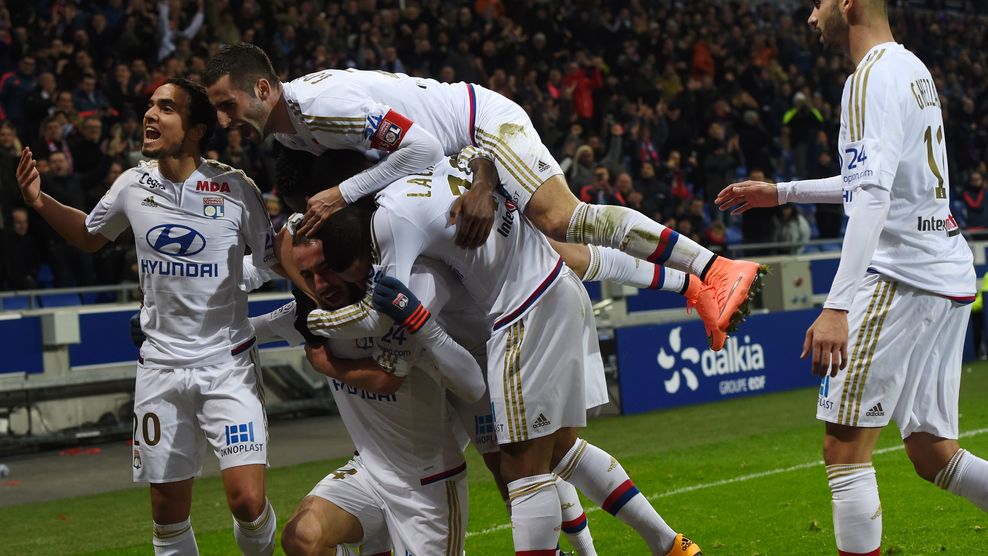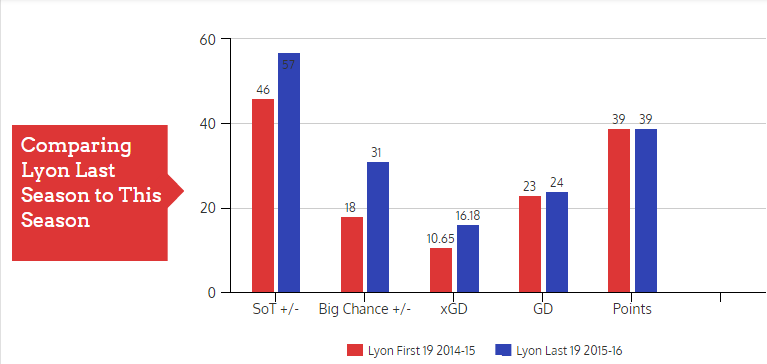Last season Juventus had their worst start in the Serie A in 54 years, collecting just 12 points from the first 10 games of their league campaign. Pretty much everyone wrote them off for the title race, but somehow they still won the Scudetto, recording a stunning streak of 25 wins in 26 games, finishing the season with 91 points, 9 more than the runners-up of Napoli.
The hard-to-believe comeback achieved by the Bianconeri was a manifestation of the edge they have built over the rest of the league in the last few years. Juventus have won the last five Serie A titles, averaging more than 90 points per season and leading the second placed team of an average of 11.2 points.
As if that was not enough, this summer's transfer window may have further enlargened the gap. Not only Juventus improved with the purchases of players like Gonzalo Higuaín and Miralem Pjanić, but they manged to considerably weaken Napoli and Roma, arguably their two main rivals to the title, depriving them of their two best players. Despite the departure from the team of Alvaro Morata and Paul Pogba, two of the best young players in the world, they added depth and quality with the acquisitions of Daniel Alves, Mehdi Benatia and Marko Pjaca, making the Serie A look, at least on paper, more and more like a one horse race, like Ligue 1 or the Bundesliga.
Juve lost #Pogba, but they still have 4 players who were top 10 for scoring contribution last season, 3 in the top 4 pic.twitter.com/086Wbpc63G
— Flavio Fusi (@FlaFu_tbol) August 8, 2016
Transfers
In 2015/2016 Gonzalo Higuaín had the best attacking season the league has ever witnessed. He led the Serie A in shots (5.50 per 90), shots on target (2.51 per 90) and non-penalty goals (1.00 per 90). In doing so he broke Gunnar Nordhal’s 66-year-old record, scoring 36 goals; more than the amount Bologna, Verona, Frosinone and Udinese scored all season.
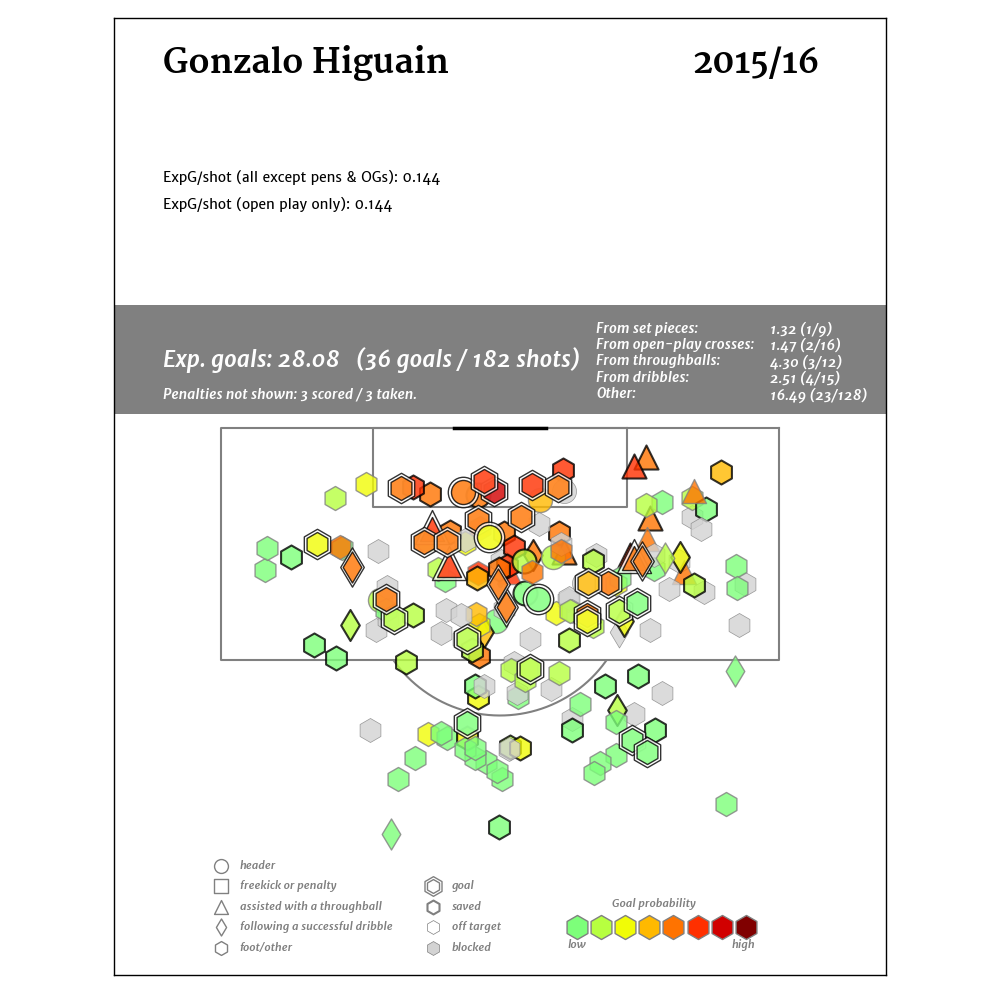
Obviously, his offensive prowess came at a cost: to bring the Argentinean to Turin Juve had to activate the release clause in his contract with Napoli. The €90 M they spent on him, is now the 4th biggest fee ever paid in the world's transfer market, topped just by fees for Ronaldo, Bale and Pogba. Precisely the money they got for the Frenchman financed the move for Higuaín, but still you wonder if splashing that amount on a soon-to-be 29 years old striker is the right thing to do. To replace a top class striker like Morata, they needed another top class striker and, together with Suárez and Lewandowski, Higuaín is arguably the best in the world right now. Yet el Pipita could offer his maximum output for just two or three season, so if we consider it by itself, it doesn’t sound as the smartest move.
However, if we put this transfer in the context of Juventus' recent seasons and of their entire reinforcement campaign, it starts to make much more sense. Juve have gathered domestic titles in numbers, but they missed European glory, even though they reached a CL final in 2014/2015. Key players like Buffon (38), Barzagli (35), Chiellini (32), Evra (35) and Licthsteiner (32) will have just a couple more occasions to try to win the Champions League, and so Juve decided to go all-in before the start of a new cycle.
In order to propel their European hopes, Juve acquired also Champions League veteran and multiple winner, Daniel Alves. At 33, he is a short-term solution, but even if his la Liga output declined last season, he is still one of the best right backs in the world right now. Other than top-class quality the Brazilian offers depth in a role where Juve had just Lichtsteiner (32), after the departure of Padoin and Cáceres: the two will likely alternate, in order to keep both fit in a season that, if everything goes well, will see them competing in 55+ games.
Before moving to Bayern, Benatia impressed in his only Serie A season, in which he even scored 5 goals for Roma. He will juice up (and even if he is 29, rejuvenate) Juventus array of elite defenders, establishing, together with Barzagli, Bonucci, Chiellini and Rugani arguably the best quintet of centre-backs in Europe. Ah, and he will cost just € 3 M, since they got him on loan with option to buy.
Marko Pjaca is another tricky transfer. Allegri usually does not field wingers, so the Croatian would be probably deployed as a forward or behind the strikers, either in a 4-3-1-2 or in a 4-3-2-1. Pjaca, who impressed in his limited playing time at the Euros, averaged 0.59 goals+assists per 90 during his Dinamo Zagreb career. As Cuadrado (who could re-join on loan before the end of the transfer window) did last year, he could offer unpredictability to their plays, creating chances for himself and his teammates with his dribbling.
Finally yet importantly, Juventus had to find a replacement for Pogba and they found him before they sold the Frenchman to Manchester United. At the start of the summer they acquired Miralem Pjanić, the only midfielder able to hit double figure in goals (10) and assists (12), last season, and subsequently the one with the highest scoring contribution. As you may already presume from this information, Pjanić had the best season of his career and the €38 M release clause Juve had to pay to employ his services is quite big, but there were not many midfielders of the same quality available for the same money in the ever-inflating transfer market.
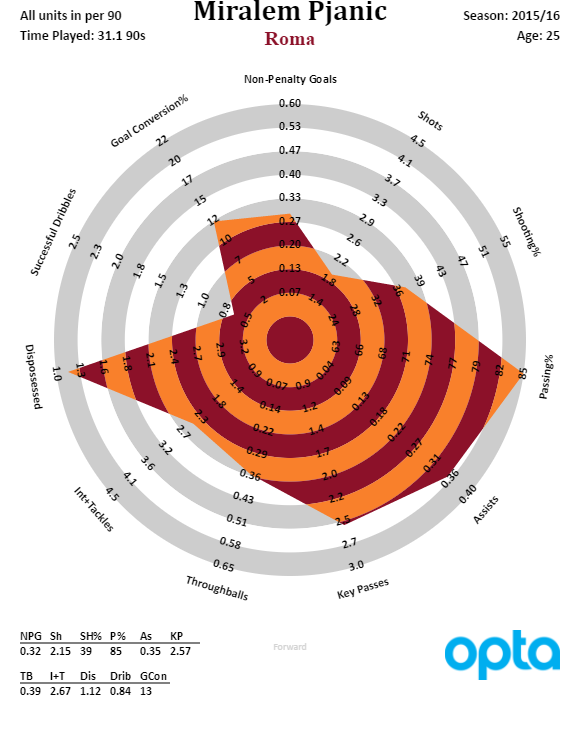
With Marchisio out until October, Allegri will probably use Pjanić as Juve deep-lying playmaker. When the Italian will come back from his injury one of the two would move to the no.8 spot in Juve three man midfield. Last season, the Bosnian had just two assists more than Pogba, but he almost doubled up the amount of key passes per 90 minutes played by the French. We will see if Allegri will decide to play him “à la Pirlo”, or as one of the interior, but no matter how, his vision and understanding of the game will be precious.
However, this creativity boost will have a price: Pjanić has not the same physicality of Pogba, even if the Bosnian tackles + interceptions averages are not particularly inferior (Roma and Juventus shared a similar amount of possession, so we can compare their defensive output). But I am sure they could compensate for this eventual problem by playing longer possessions, given how much they improved in terms of overall technique.
Metrics
In the first 12 games of last season Juventus averaged almost 18 shots per game, but they could not convert them. Indeed, they scored just 12 goals, while their opponents scored 11 by firing just 8.6 shots per game on average. That dozen games, in which Juventus converted their shots at a rate of 5.6%, risked compromising their title hopes, but it was obvious that the Bianconeri would improve their finishing sooner or later.
And so it happened: in the last 26 games of the season, Juventus averaged less shots per game (~15) and while they maintained their shots on target average of more than 5 per match, their conversion rate triplicated, reaching 15.2%. As if it was not enough they almost stopped to concede goals. In their comeback to the tile, the opponents fired 236 shots in 26 matches, yet Allegri’s team conceded just 10 goals. Their conversion rate against nosedived to 4.2%, so no wonder that Buffon broke Sebastiano Rossi’s Serie A record of 929 minutes without conceding a goal, pushing it to 973 minutes unbeaten. According to Michael Caley’s data, Juve scored 20% more goals than the expected, while conceding 15% less. This is a serious level of over performance, in which luck probably played a role, but as I said at the start of this preview, it was above all a manifestation of the gap between them and the rest of the league.
Paulo Dybala was surely their best player last season: only Gonzalo Higuaín topped his 0.80 non-penalty goals + assists per 90. Expected goals + assists suggested a value of around 0.60 for him, but every Juventus player had his stats doped by their crazy 26-game run to the title and the Argentinean made no exception. Now he will play alongside El Pipita, establishing the most powerful duo of strikers the league has seen in some years. The clinical Mario Mandzukić, who last season managed to score 0.44 non penalty-goals despite averaging just 1.62 shots per 90 and whose defensive contribution in pressing was incomparable, will probably have to sit on the bench, but I am sure he will play his part in this season too. And don’t forget Simone Zaza (if he stays), who netted arguably the single most important goal of the season in the home game against Napoli, and scored 0.68 goals overall in the 663 minutes he spent on the pitch.
European all-in?
Juventus have depth, experience, flexibility and a balanced roster with no clear weaknesses. Their defence was already one of the best in Europe, if not the best, and now they have an attack to rival the very best teams in the Champions League. In any case, they will likely acquire another midfielder and maybe Cuadrado before the end of the window.
They surely must clinch their sixth consecutive Scudetto, because otherwise, their season would be a flop, but above all, it is pretty clear they want to reach (and win) another European final. Their recruitment strategy has radically changed and it will probably make it to harder for them to rebuild in the coming years. However, you can’t blame them for their “European all-in”. In a season in which all the English teams are at the start of a new cycle and also Bayern Munich and Paris Saint-Germain have changed their managers, Juventus will have a concrete chance to win the Champions League, and even if they fail, they could regroup and try once again next season. Will they overcome their European obsession? Only time will tell.
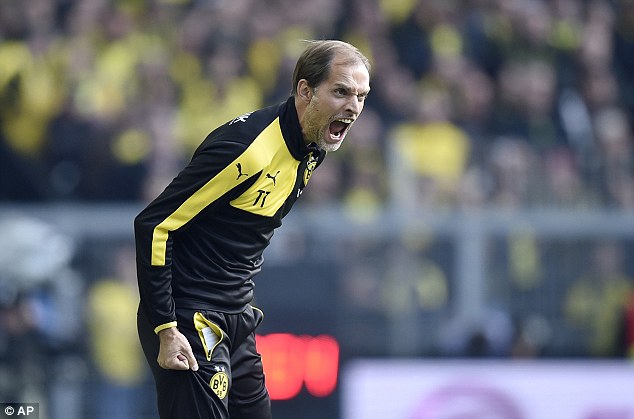 Tuchel's track suits expose his lack of work in the squat rack, won't instructions coming from a guy with skinny legs in wind pants be 5% less effective? Non-Bayern/Dortmund Rating In Order Of Expected Entertainment Value
Tuchel's track suits expose his lack of work in the squat rack, won't instructions coming from a guy with skinny legs in wind pants be 5% less effective? Non-Bayern/Dortmund Rating In Order Of Expected Entertainment Value 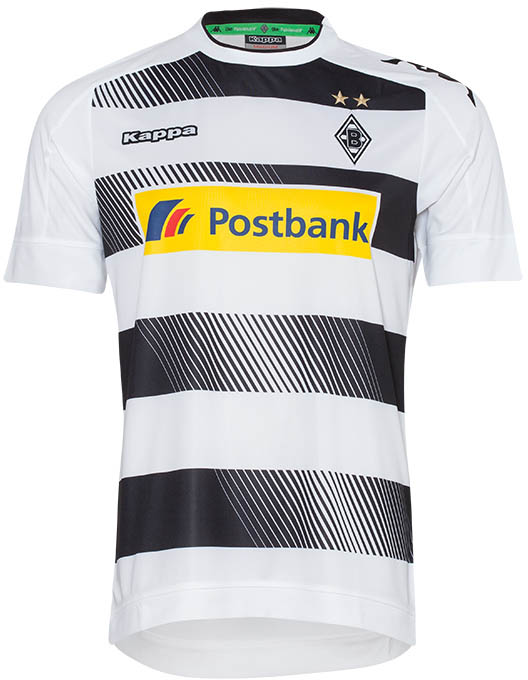
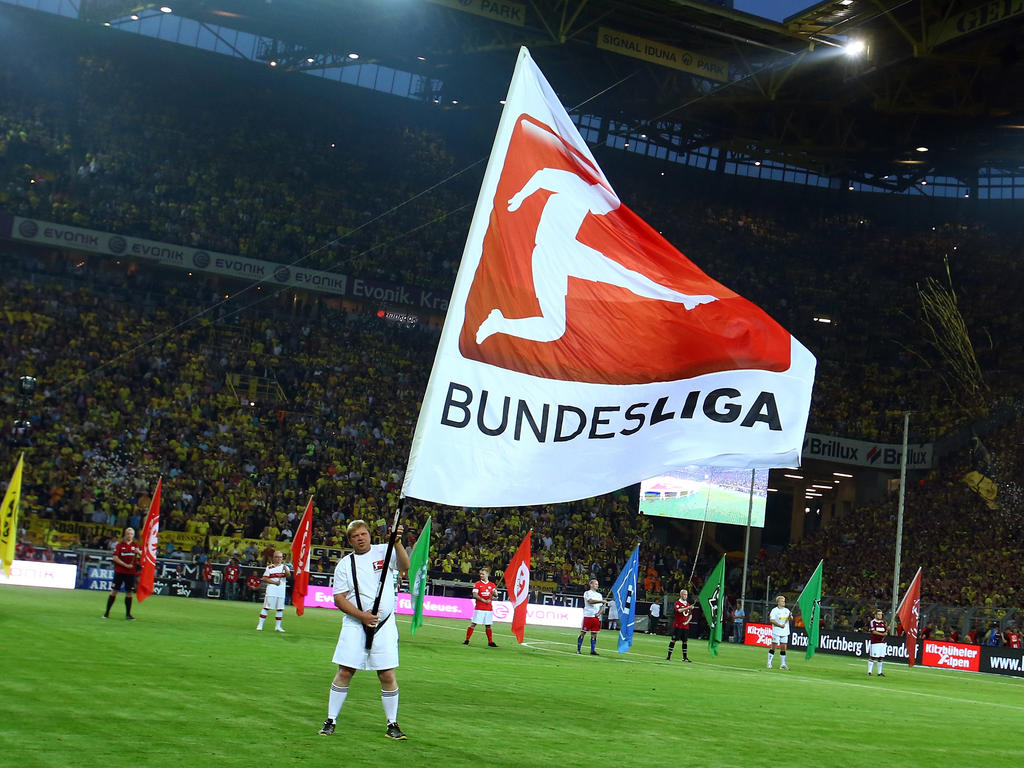
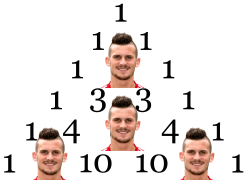
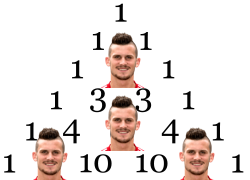 It's almost impossible to overstate how central Pascal Groß was to Ingolstadt's attack. He led the league in key passes yes, but this doesn't get to the bottom of it really. He also led the league in passes from attacking areas (~final third):
It's almost impossible to overstate how central Pascal Groß was to Ingolstadt's attack. He led the league in key passes yes, but this doesn't get to the bottom of it really. He also led the league in passes from attacking areas (~final third): 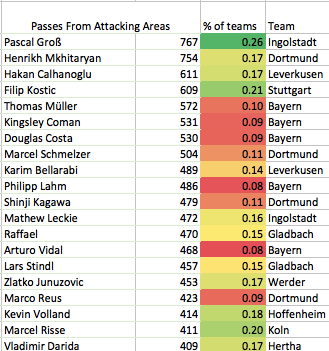 But that's still not my favorite attacking passing stat for the big man, it's this list of all passing connections in final third with at least 60 completions:
But that's still not my favorite attacking passing stat for the big man, it's this list of all passing connections in final third with at least 60 completions: 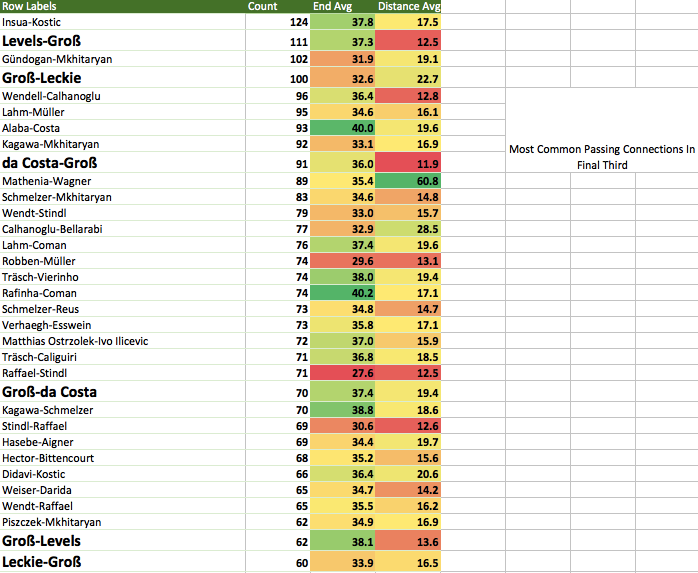 6 of the top 33 connections involve the man Groß, often forming one of his patented Pascal triangles with the right backs Levels and da Costa and his main man toward goal in the Aussie Leckie. Basically, what I'm saying is the only way Ingolstadt ever applied pressure to the opposing defense was through Pascals. It is interesting to notice how close the RB's got to Groß to pass him the ball, passes of ~12 yards on average for a team who loved a long-ball. The difference in how Levels in particular passed compared to the rest of the Ingolstadt fullbacks was stark.
6 of the top 33 connections involve the man Groß, often forming one of his patented Pascal triangles with the right backs Levels and da Costa and his main man toward goal in the Aussie Leckie. Basically, what I'm saying is the only way Ingolstadt ever applied pressure to the opposing defense was through Pascals. It is interesting to notice how close the RB's got to Groß to pass him the ball, passes of ~12 yards on average for a team who loved a long-ball. The difference in how Levels in particular passed compared to the rest of the Ingolstadt fullbacks was stark.  In one of the more bizarre and standout stats of the year Tobias Levels actually had one of the highest completion percentages of any fullback in the league and did it while playing on a team that completed 64% of its passes overall. Maybe he's suddenly Phillip Lahm in the body of the guy manning the counter at your local electronics store?
In one of the more bizarre and standout stats of the year Tobias Levels actually had one of the highest completion percentages of any fullback in the league and did it while playing on a team that completed 64% of its passes overall. Maybe he's suddenly Phillip Lahm in the body of the guy manning the counter at your local electronics store? 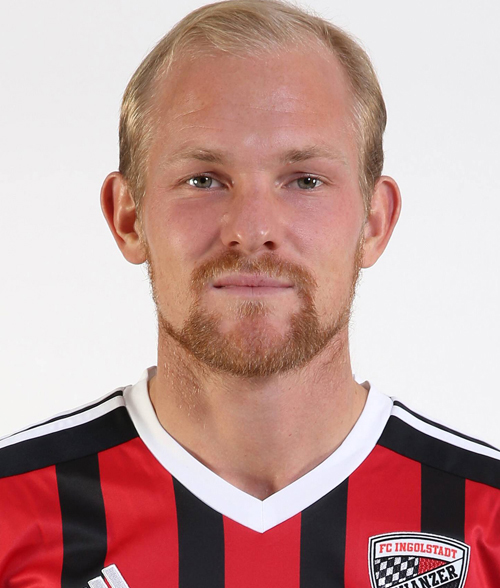 If he is, he will have plenty of minutes to roll up and down the right with da Costa moving to Leverkusen. One Big Strength: The frenetic press made Ingolstadt were a tough opponent for everyone in the league with how they defended. No team forced opponents into a lower completion % in their own half than Ingolstadt did. I'll let Pep say it, he might have more credibility than me:
If he is, he will have plenty of minutes to roll up and down the right with da Costa moving to Leverkusen. One Big Strength: The frenetic press made Ingolstadt were a tough opponent for everyone in the league with how they defended. No team forced opponents into a lower completion % in their own half than Ingolstadt did. I'll let Pep say it, he might have more credibility than me: 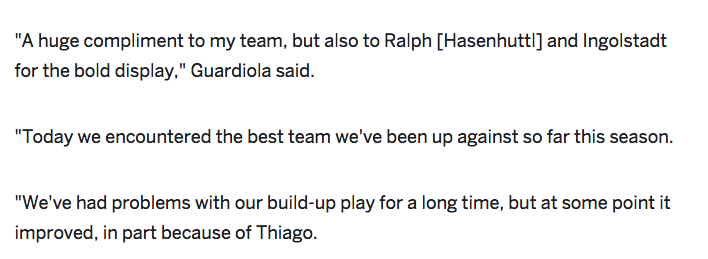 Tuchel made similar comments about how it's a headache to play against them. To be promoted and get praise like that from coaches like Tuchel and Guardiola is basically enough said. Though to say something else, I also named Hasenhüttl by coach of the year in Europe at the midpoint and the Bundesliga Coach of the Year after the season. If you have Pep, Tuchel, and a random guy on twitter with a Homer Simpson profile picture praising you, you know you've made it. One Big Weakness: Ralph Hasenhüttl is off to RB Leipzig. He was the man behind the hectic defensive pressure Ingolstadt brought to each and every game and the Groß-centric strategy that scraped enough goals out of what looked to be a talent-poor attack to finish comfortably mid-table. Groß himself said that Hasenhüttl was crucial to getting him to reach his current level: "Ralph Hasenhüttl has let me play immediately and gave me the confidence in a personal conversation. At my age, that's the most important thing."
Tuchel made similar comments about how it's a headache to play against them. To be promoted and get praise like that from coaches like Tuchel and Guardiola is basically enough said. Though to say something else, I also named Hasenhüttl by coach of the year in Europe at the midpoint and the Bundesliga Coach of the Year after the season. If you have Pep, Tuchel, and a random guy on twitter with a Homer Simpson profile picture praising you, you know you've made it. One Big Weakness: Ralph Hasenhüttl is off to RB Leipzig. He was the man behind the hectic defensive pressure Ingolstadt brought to each and every game and the Groß-centric strategy that scraped enough goals out of what looked to be a talent-poor attack to finish comfortably mid-table. Groß himself said that Hasenhüttl was crucial to getting him to reach his current level: "Ralph Hasenhüttl has let me play immediately and gave me the confidence in a personal conversation. At my age, that's the most important thing." 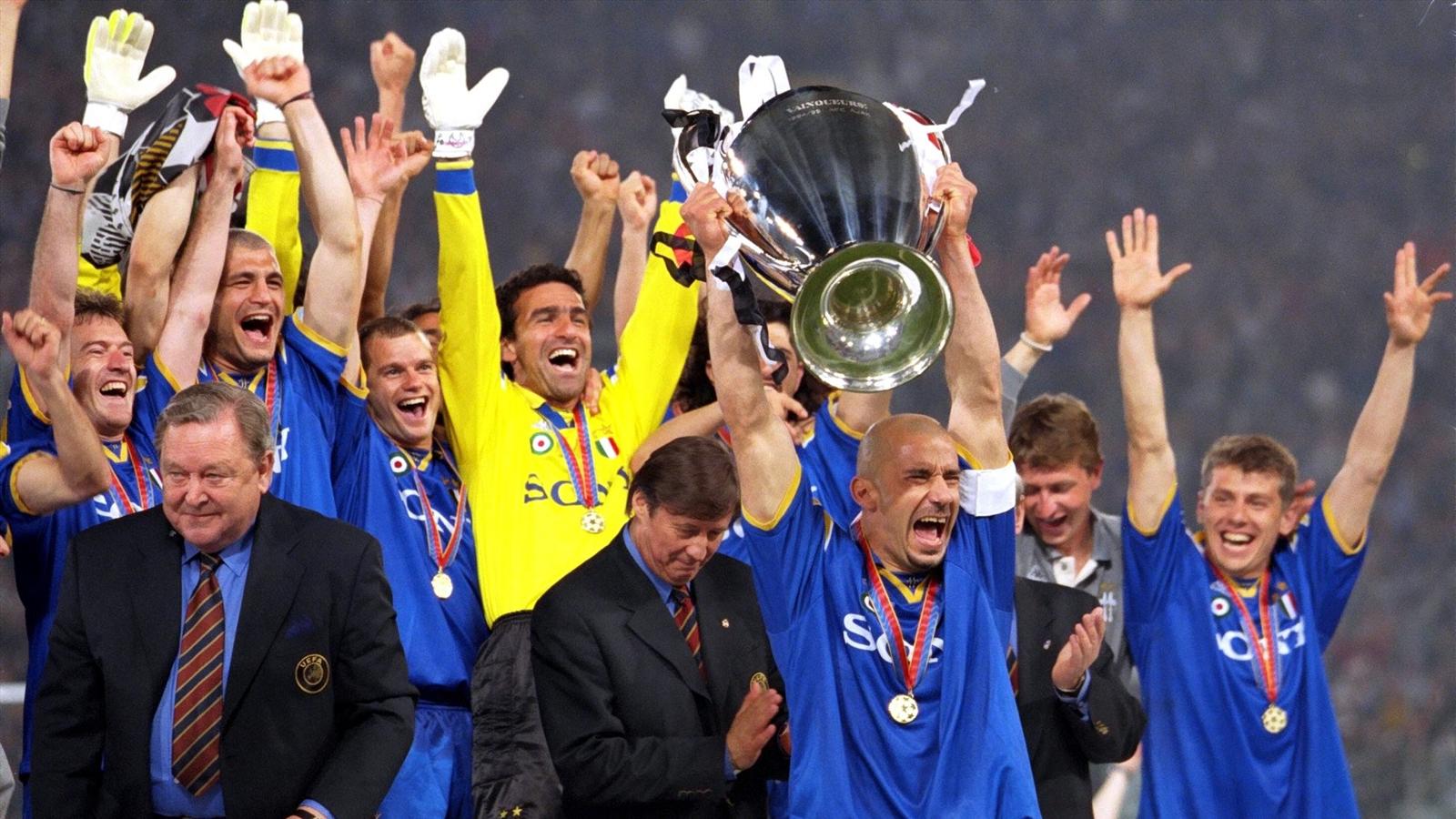


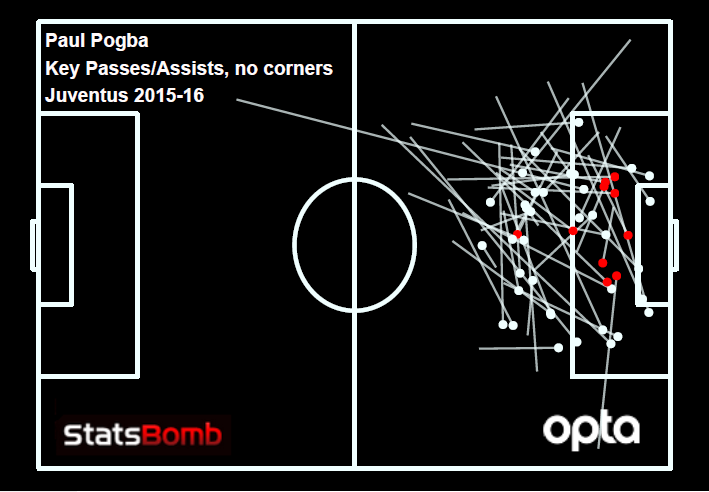
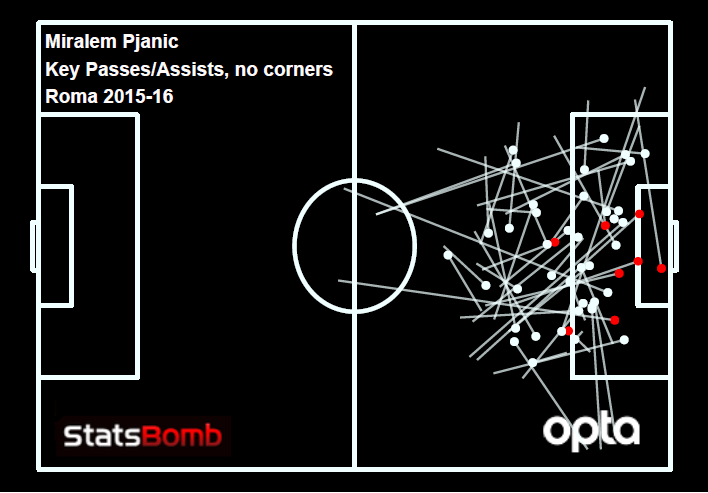
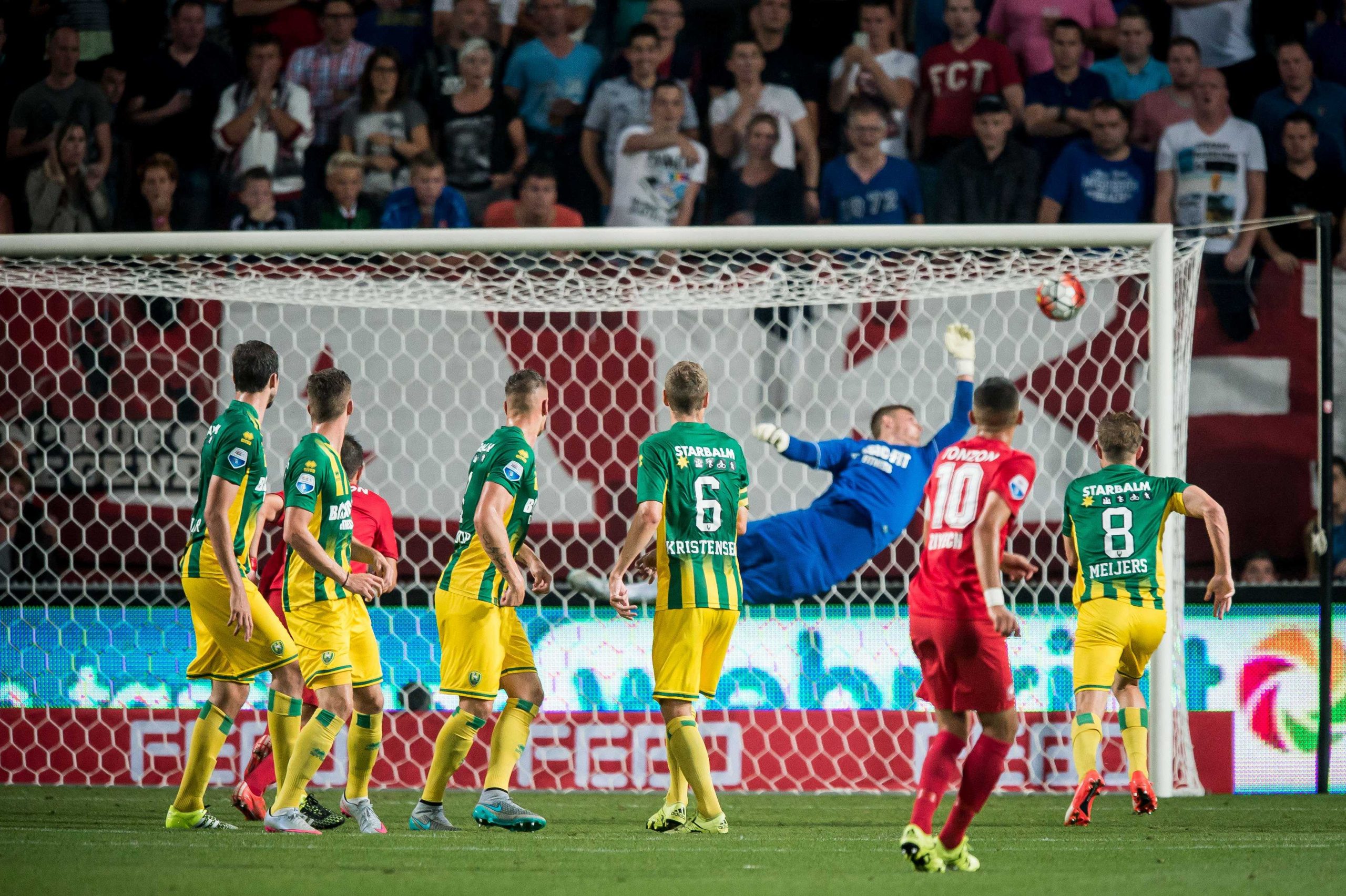
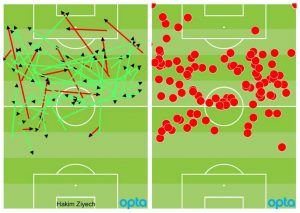

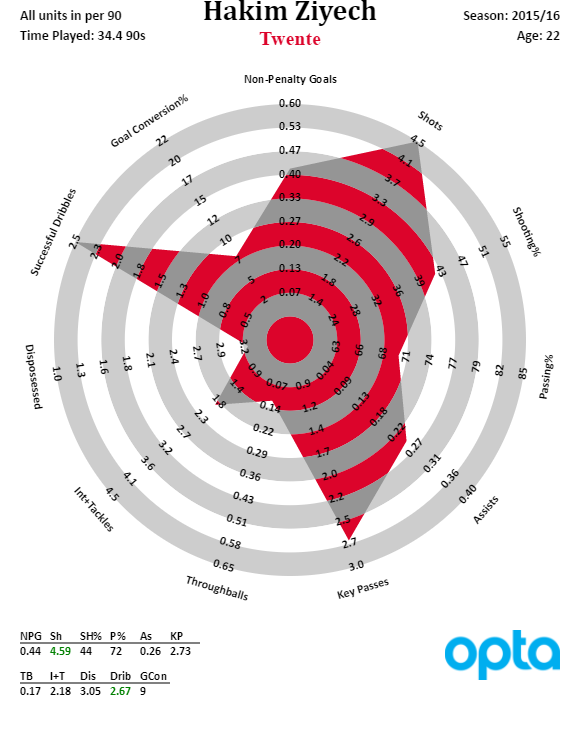

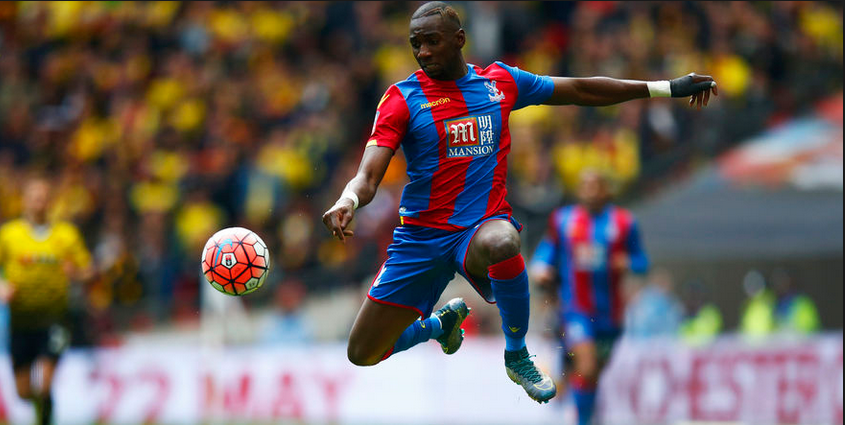
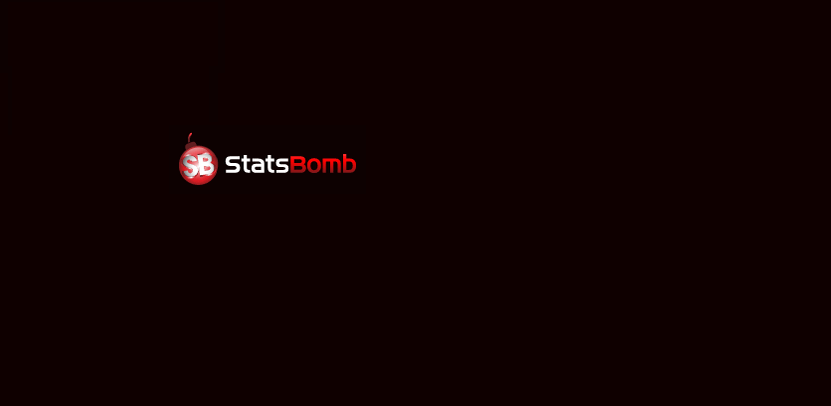
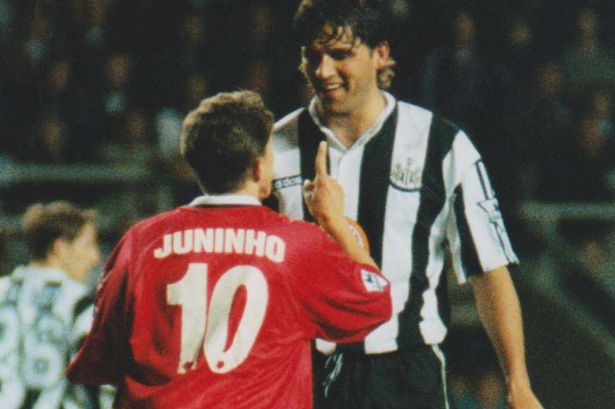
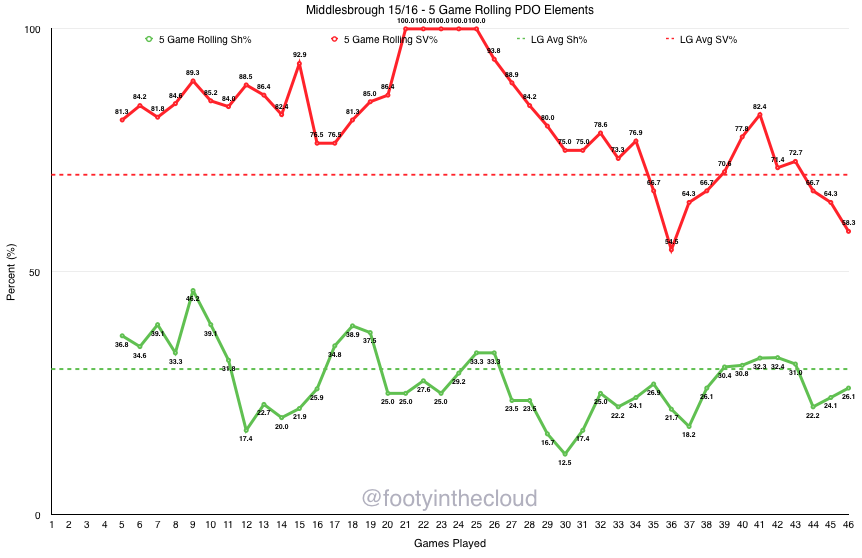
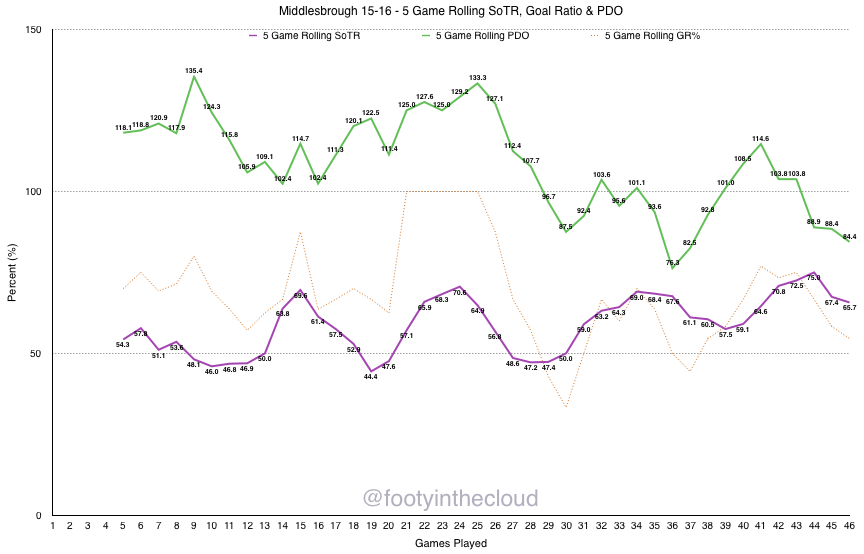
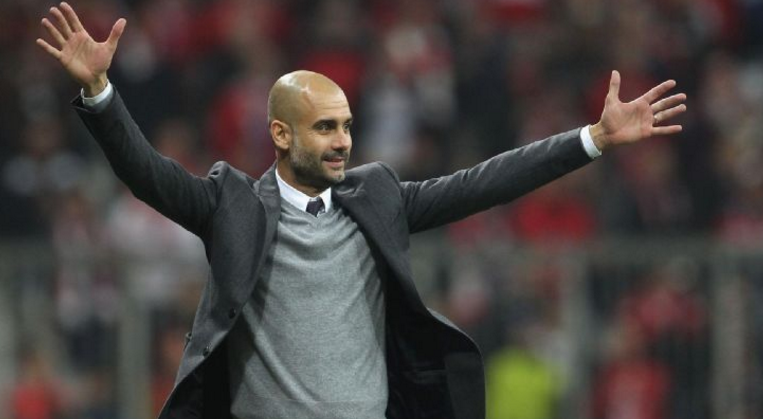
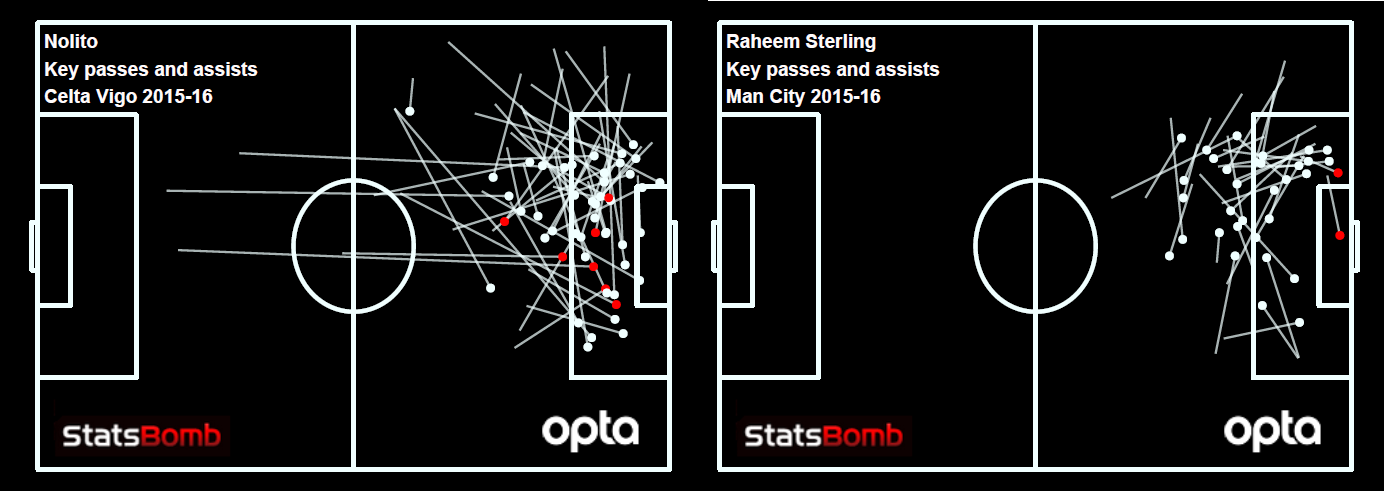
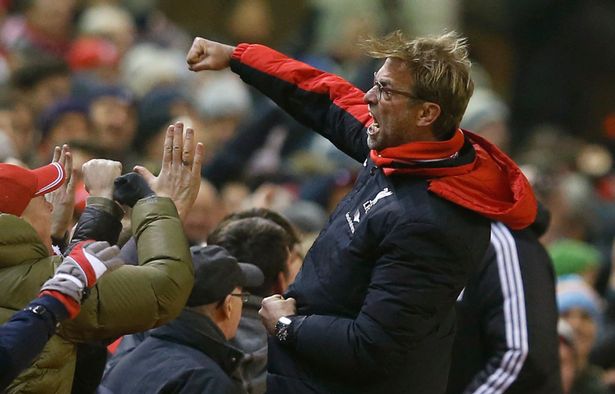
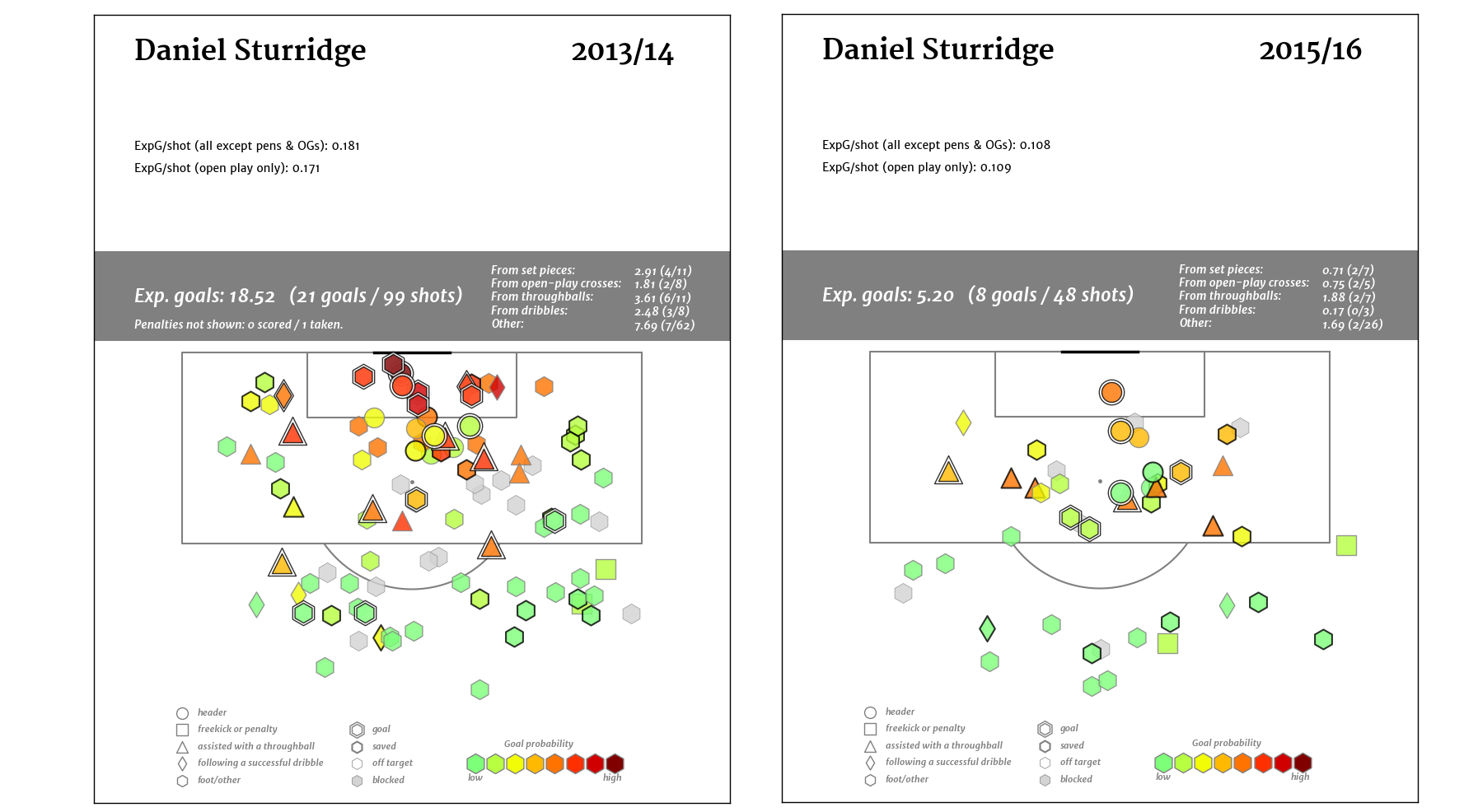 Transfers in Loris Karius (£5m, £60k pw) - A huge need filled fairly early on in the transfer window, Karius was bought with the intent to move straight into the first team. Unfortunately he picked up an injury in pre-season and looks like he'll miss the first 4-8 weeks of the season. His shot stopping numbers look pretty good, and as we've pointed out already Mignolet was calamitous so his value above replacement is high. Mignolet was actually coming off a great season with Sunderland when we signed him so many fans may be worried that the same may happen with Karius. Fortunately Karius' numbers are better than Mignolet's when he joined. Using a probability method, I can calculate that an average keeper facing the same shots would have done worse about 71% of the time compared to a decent, but lesser 54% for Mignolet after his last season at Sunderland.
Transfers in Loris Karius (£5m, £60k pw) - A huge need filled fairly early on in the transfer window, Karius was bought with the intent to move straight into the first team. Unfortunately he picked up an injury in pre-season and looks like he'll miss the first 4-8 weeks of the season. His shot stopping numbers look pretty good, and as we've pointed out already Mignolet was calamitous so his value above replacement is high. Mignolet was actually coming off a great season with Sunderland when we signed him so many fans may be worried that the same may happen with Karius. Fortunately Karius' numbers are better than Mignolet's when he joined. Using a probability method, I can calculate that an average keeper facing the same shots would have done worse about 71% of the time compared to a decent, but lesser 54% for Mignolet after his last season at Sunderland.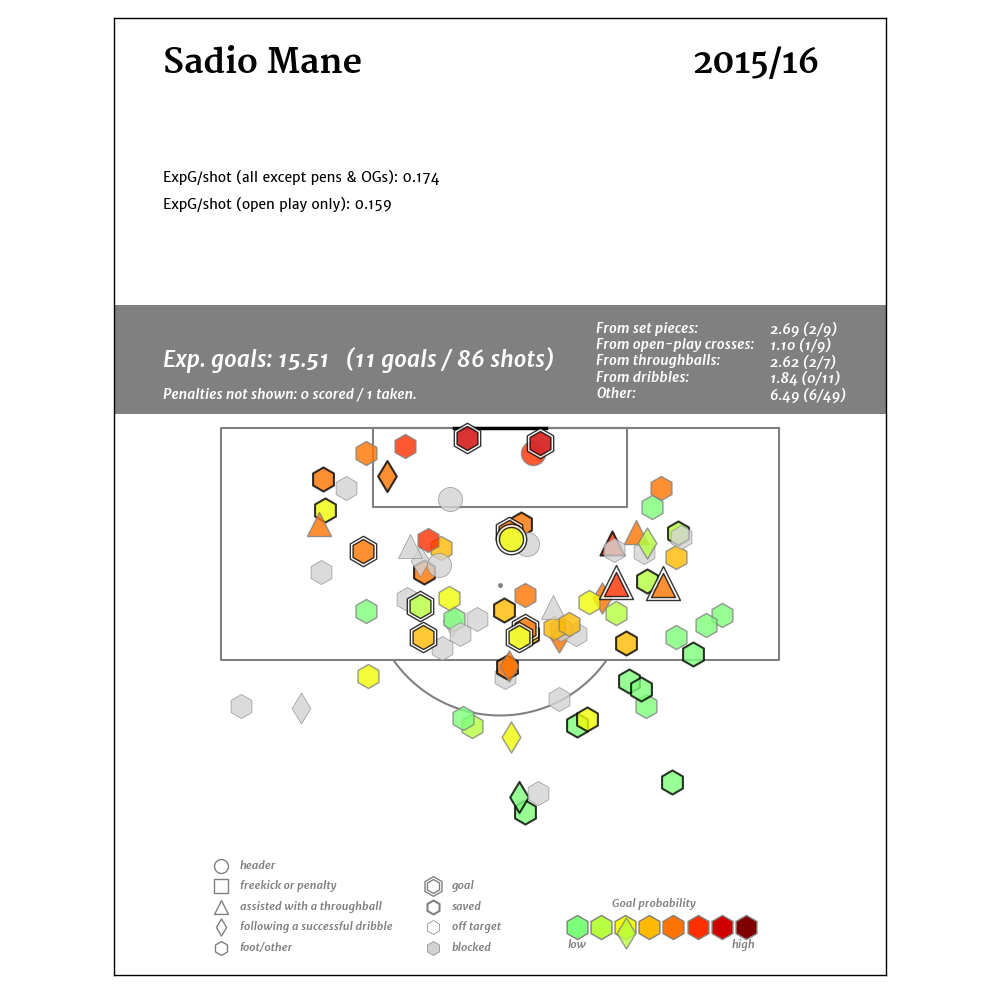 Georginio Wijnaldum (£23m, £75k pw) - Possibly the most questionable of this season's signings. 11 goals and 5 assists is great production for someone splitting minutes between CM and AM for a relegated team, even if he did run a little hot scoring his 11 goals from only 54 shots. Will be interested to see how Klopp fits him into the team, since there's lots of competition for our 3 attacking midfield positions and Can and Henderson seem pretty set in the centre. Transfers out Joe Allen (£13m) Not going to lie I am going to miss
Georginio Wijnaldum (£23m, £75k pw) - Possibly the most questionable of this season's signings. 11 goals and 5 assists is great production for someone splitting minutes between CM and AM for a relegated team, even if he did run a little hot scoring his 11 goals from only 54 shots. Will be interested to see how Klopp fits him into the team, since there's lots of competition for our 3 attacking midfield positions and Can and Henderson seem pretty set in the centre. Transfers out Joe Allen (£13m) Not going to lie I am going to miss 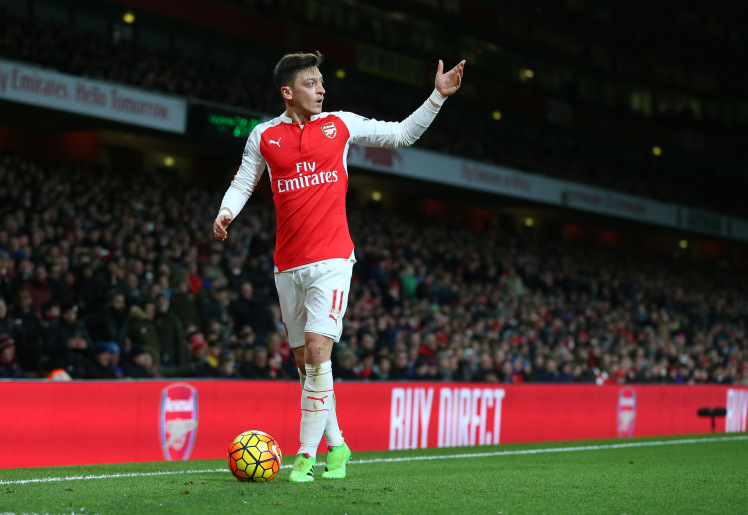
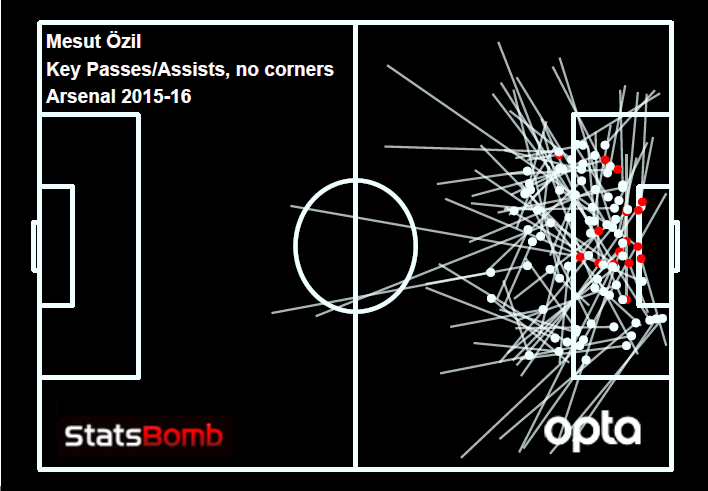
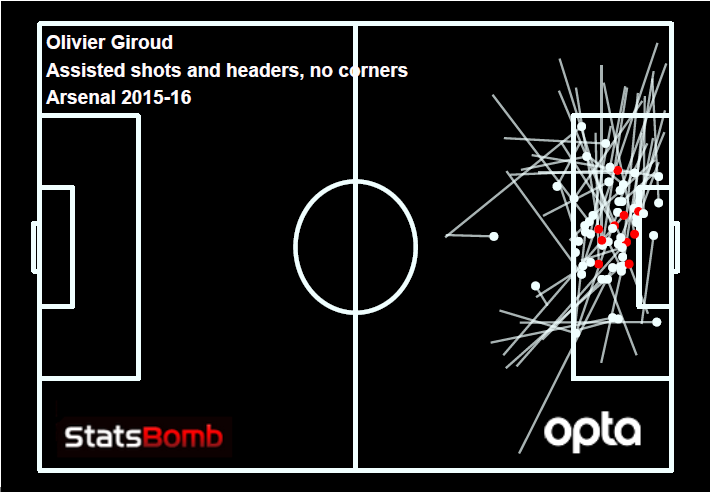 Talk of replacing him recurs every year, but when you pick apart his contribution, it's actually quite difficult to see how Arsenal could improve on him without landing right at the top of the market, something that post-Suarez and now Vardy, they have failed to do. One option that seems not to have been explored in recent years is something other larger clubs have repeatedly tried: to stockpile young talented players, with a view to hoping they break out. Manchester City appear to have based their entire summer on this philosophy and the two German giants, Bayern and Dortmund have recently shown great skill in recruiting elite young players. Wenger, again seems reticent to compete in this market, at least to the level he may have in the past. Would Wenger in his earlier years have persisted for so long with Flamini, Mikael Arteta or Tomas Rosicky? Or even Oxlade-Chamberlain, Jack Wilshere and Theo Walcott? These are tricky questions to answer when often the solutions are new players, and at least to some degree, Wenger seems to value continuity and loyalty. Overall, when fit, the first team is very strong and there is some degree of depth, primarily in midfield. Metrics Arsenal’s team metrics have taken an interesting journey since the “star signing” era that was ushered in by the purchase of Ozil. Arsenal's general shot volumes were by their own standards low in 2013-14 and came forward for 2014-15 before a slight drop off in 2015-16. All these are enough to rate among the better teams in the league but in no way dominant. Expected goal analysis reveals a slightly different story: over these three seasons, Arsenal have progressively created chances from closer locations and their rate has increased year on year with 2015-16 being a starkly better season. Arsenal’s average shot distance for 2015-16 was a shade over 16 metres and that is the shortest Premier League average recorded in the period from 2010-11 onwards; that's right, first of 120 teams. (Though it is perfectly feasible that they will drop back somewhat here, it is still a positive trend). The centrality of their shots ranked third for 2015/16, so Arsenal created shots from close in and central. Ideal really. So why didn’t they do better last year? The primary reason seemed to be a finishing slump that affected the majority of the team. That it was so widespread does provoke the question as to why, and that's tough to answer beyond the obvious dodge to cite variance. That could still hold as true as the overall team rate was notable but not as woeful as say Liverpool's 2011-12 or 2012-13 seasons. Olivier Giroud was the only attacking player that exceeded his expected rate, and even then he suffered a huge drought in scoring in going 15 league games without a goal from January onwards. There's a mild worry that their shot volumes did not approach truly elite levels and that may have been a side effect of the focus on location, but no matter: the team created more defined big chances than any other team in the league. Defence is good too. There’s a school of thought that Arsenal are weak at conceding shots from range, and it’s another faulty analysis that misses something crucial. In 2015-16, Arsenal limited their opponents to the longest shots in the league (over 19.5 metres on average). They were very good at fending off teams and this has fed into an above average save percentage that has now run across four seasons. That they may have conceded the odd goal from range or a high percentage of shots from such locations is actually more of a reflection of sound practice than a fundamental flaw. In 2015-16 Arsenal effectively repelled the opposition from shooting from close in. Again this is a hugely positive trend and is backed up by the fact that the team also conceded fewer big chances than any other team in the league. Same old, same old? The fan base will never be content until they see a genuine title challenge. While the league appears to be trickier to navigate than ever before, the underlying metrics that point out Arsenal’s strengths suggest that even in a competitive league, they could well be progressing towards once more competing for the title. If the strategy to focus on a higher grade of chance and limit the opposition continues at a similar level to last season, it is entirely reasonable to expect them to bounce forward and get right into the mix. Though their general form slowed for a period after Christmas to some degree it coincided with a run of injuries, the malaise which they seem doomed to endure year in year out. And fixing that is something that is well overdue. We know Arsenal have a shrewd team of people looking at issues from a data led perspective in StatDNA, so it’s not as if the club is loath to invest in smart practices in order to look for edges. Why the continued retention of both injury prone players and seemingly little progress in developing practices to reduce injury rates? This gradual change in style over recent seasons may become frustrating when the results fail to create a solid title challenge. Ideas about maximising shot locations might seem a folly, but it's possible that this subtle shift in focus in recent years is an attempt to bridge the gap. It is twenty seasons since Arsenal finished outside the top four and at least through this century they haven't projected to finish outside those positions once, and that's the longest run in the league and a huge credit. They haven't had to transition like Manchester United, they haven't been forced to repeatedly rehire like Chelsea. It is only the glory of the early Wenger years that cast a shadow on his subsequent exploits and the stability he has brought the club should be well appreciated. Indeed it is hard to envisage them outside the four, even in a more competitive league. The main way to build upon 2015-16 would be to max out the squad and offer genuine options in a variety of positions. The responsibility that Ozil carries is huge, and a similar type of player as an alternative could bring great dividends. Too many times during December and January Arsenal fielded a solid first eleven but when looking to the bench for game changers found kids, aging defensive midfielders or centre backs. More striker options or young talent could bear great fruit. None of this would undermine the enviable stability the squad possesses but with three senior players and Wenger lieutenants in Rosicky, Flamini and Arteta all gone, the squad's dynamic will have changed. It is the perfect time to add sufficient depth and 2016-17 could be that much more. But it's a familiar refrain, to be close but frustratingly held to Wenger's stoicism. He has three weeks to commit to only slight change and two transfers might do it. Whether he does so could well define Arsenal's season once more. ______________ If you enjoyed check out our other season previews
Talk of replacing him recurs every year, but when you pick apart his contribution, it's actually quite difficult to see how Arsenal could improve on him without landing right at the top of the market, something that post-Suarez and now Vardy, they have failed to do. One option that seems not to have been explored in recent years is something other larger clubs have repeatedly tried: to stockpile young talented players, with a view to hoping they break out. Manchester City appear to have based their entire summer on this philosophy and the two German giants, Bayern and Dortmund have recently shown great skill in recruiting elite young players. Wenger, again seems reticent to compete in this market, at least to the level he may have in the past. Would Wenger in his earlier years have persisted for so long with Flamini, Mikael Arteta or Tomas Rosicky? Or even Oxlade-Chamberlain, Jack Wilshere and Theo Walcott? These are tricky questions to answer when often the solutions are new players, and at least to some degree, Wenger seems to value continuity and loyalty. Overall, when fit, the first team is very strong and there is some degree of depth, primarily in midfield. Metrics Arsenal’s team metrics have taken an interesting journey since the “star signing” era that was ushered in by the purchase of Ozil. Arsenal's general shot volumes were by their own standards low in 2013-14 and came forward for 2014-15 before a slight drop off in 2015-16. All these are enough to rate among the better teams in the league but in no way dominant. Expected goal analysis reveals a slightly different story: over these three seasons, Arsenal have progressively created chances from closer locations and their rate has increased year on year with 2015-16 being a starkly better season. Arsenal’s average shot distance for 2015-16 was a shade over 16 metres and that is the shortest Premier League average recorded in the period from 2010-11 onwards; that's right, first of 120 teams. (Though it is perfectly feasible that they will drop back somewhat here, it is still a positive trend). The centrality of their shots ranked third for 2015/16, so Arsenal created shots from close in and central. Ideal really. So why didn’t they do better last year? The primary reason seemed to be a finishing slump that affected the majority of the team. That it was so widespread does provoke the question as to why, and that's tough to answer beyond the obvious dodge to cite variance. That could still hold as true as the overall team rate was notable but not as woeful as say Liverpool's 2011-12 or 2012-13 seasons. Olivier Giroud was the only attacking player that exceeded his expected rate, and even then he suffered a huge drought in scoring in going 15 league games without a goal from January onwards. There's a mild worry that their shot volumes did not approach truly elite levels and that may have been a side effect of the focus on location, but no matter: the team created more defined big chances than any other team in the league. Defence is good too. There’s a school of thought that Arsenal are weak at conceding shots from range, and it’s another faulty analysis that misses something crucial. In 2015-16, Arsenal limited their opponents to the longest shots in the league (over 19.5 metres on average). They were very good at fending off teams and this has fed into an above average save percentage that has now run across four seasons. That they may have conceded the odd goal from range or a high percentage of shots from such locations is actually more of a reflection of sound practice than a fundamental flaw. In 2015-16 Arsenal effectively repelled the opposition from shooting from close in. Again this is a hugely positive trend and is backed up by the fact that the team also conceded fewer big chances than any other team in the league. Same old, same old? The fan base will never be content until they see a genuine title challenge. While the league appears to be trickier to navigate than ever before, the underlying metrics that point out Arsenal’s strengths suggest that even in a competitive league, they could well be progressing towards once more competing for the title. If the strategy to focus on a higher grade of chance and limit the opposition continues at a similar level to last season, it is entirely reasonable to expect them to bounce forward and get right into the mix. Though their general form slowed for a period after Christmas to some degree it coincided with a run of injuries, the malaise which they seem doomed to endure year in year out. And fixing that is something that is well overdue. We know Arsenal have a shrewd team of people looking at issues from a data led perspective in StatDNA, so it’s not as if the club is loath to invest in smart practices in order to look for edges. Why the continued retention of both injury prone players and seemingly little progress in developing practices to reduce injury rates? This gradual change in style over recent seasons may become frustrating when the results fail to create a solid title challenge. Ideas about maximising shot locations might seem a folly, but it's possible that this subtle shift in focus in recent years is an attempt to bridge the gap. It is twenty seasons since Arsenal finished outside the top four and at least through this century they haven't projected to finish outside those positions once, and that's the longest run in the league and a huge credit. They haven't had to transition like Manchester United, they haven't been forced to repeatedly rehire like Chelsea. It is only the glory of the early Wenger years that cast a shadow on his subsequent exploits and the stability he has brought the club should be well appreciated. Indeed it is hard to envisage them outside the four, even in a more competitive league. The main way to build upon 2015-16 would be to max out the squad and offer genuine options in a variety of positions. The responsibility that Ozil carries is huge, and a similar type of player as an alternative could bring great dividends. Too many times during December and January Arsenal fielded a solid first eleven but when looking to the bench for game changers found kids, aging defensive midfielders or centre backs. More striker options or young talent could bear great fruit. None of this would undermine the enviable stability the squad possesses but with three senior players and Wenger lieutenants in Rosicky, Flamini and Arteta all gone, the squad's dynamic will have changed. It is the perfect time to add sufficient depth and 2016-17 could be that much more. But it's a familiar refrain, to be close but frustratingly held to Wenger's stoicism. He has three weeks to commit to only slight change and two transfers might do it. Whether he does so could well define Arsenal's season once more. ______________ If you enjoyed check out our other season previews 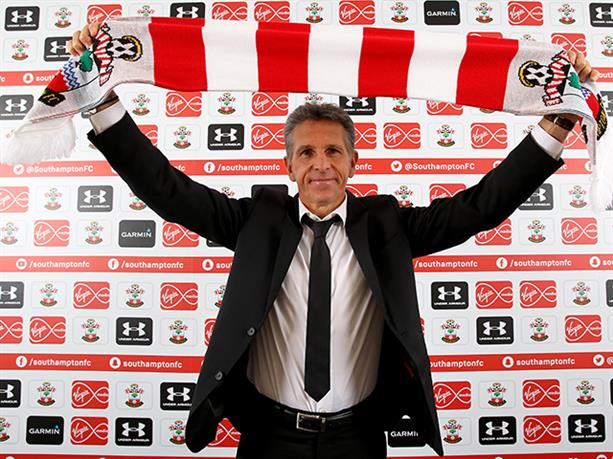
 Will Puel's version succeed in England? Time will tell on that. His acquisitions over the summer and some of the remaining parts fit into his framework: they already have a proven creator to play the role that Ben Arfa thrived in, a young midfielder with the talents to play different roles within the midfield, fullbacks who can provide the width necessary and a winger who could possibly be a striker in disguise. Transfers Tell me if you've heard this before, but Southampton had another summer consisting of selling their stars at really high prices. Sadio Mane, Graziano Pelle and Victor Wanyama were sold for the region of £56M which is really good business. Wanyama had one year left on his contract and the odds of him extending were probably not great, especially considering he was keen to leave last summer. Southampton made a profit on Pelle despite him also having one year left on his deal and being over 30. Mane at 24 is coming into his best years and has been a good player in the league. His profile fits with what Jurgen Klopp wanted, but £36M for him is a very decent fee even though he had a very fine season. Coming in, Nathan Redmond at only £11M is a fine gamble. On a very poor Norwich side, he managed to probably be their only bright spot in attack. Courtesy of
Will Puel's version succeed in England? Time will tell on that. His acquisitions over the summer and some of the remaining parts fit into his framework: they already have a proven creator to play the role that Ben Arfa thrived in, a young midfielder with the talents to play different roles within the midfield, fullbacks who can provide the width necessary and a winger who could possibly be a striker in disguise. Transfers Tell me if you've heard this before, but Southampton had another summer consisting of selling their stars at really high prices. Sadio Mane, Graziano Pelle and Victor Wanyama were sold for the region of £56M which is really good business. Wanyama had one year left on his contract and the odds of him extending were probably not great, especially considering he was keen to leave last summer. Southampton made a profit on Pelle despite him also having one year left on his deal and being over 30. Mane at 24 is coming into his best years and has been a good player in the league. His profile fits with what Jurgen Klopp wanted, but £36M for him is a very decent fee even though he had a very fine season. Coming in, Nathan Redmond at only £11M is a fine gamble. On a very poor Norwich side, he managed to probably be their only bright spot in attack. Courtesy of 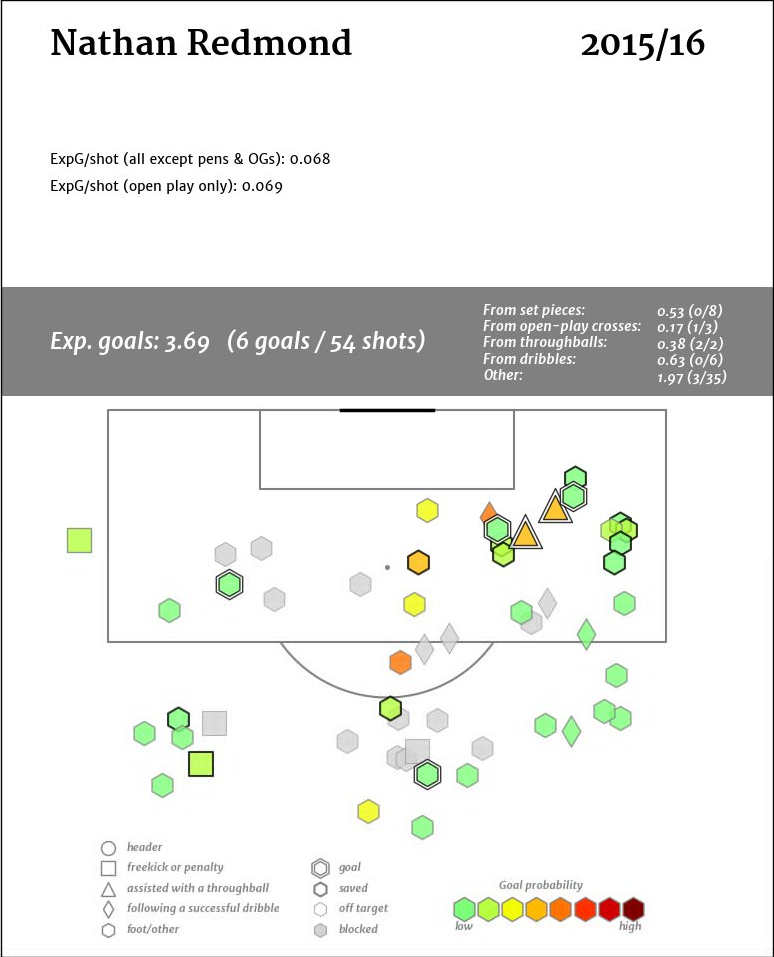
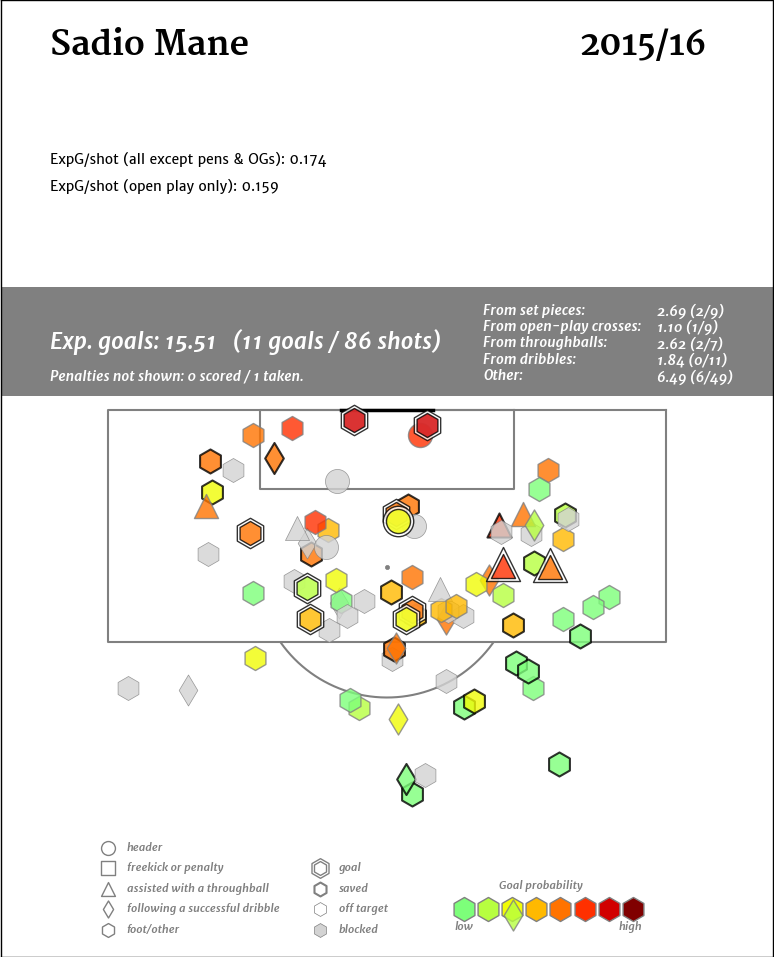 Similar sentiments could be said about Southampton's other big signing Pierre-Emile Hojbjerg, once a favorite of Pep Guardiola. Southampton have lost defensive midfielders over the past two summers and Hojbjerg from all accounts profiles decently as one with added playmaking and box-to-box potential. A full time role as a potential key cog in the system could be the perfect way to show his capabilities as a player, and put his lackluster campaign at Schalke behind him and at 21 he has plenty of time still to progress. Jeremy Pied is basically added insurance in the fullback and even midfield position. Overall it's been another summer of Southampton selling high and buying low with the added potential of high resale value in the near future. Redmond has work to do to realise his potential but is worth gambling on, Hojbjerg fits a need with also a potentially high ceiling while Pied helps with squad depth. If the two gambles pay off, Southampton could find themselves with good players and more options to trade moving forward. The Future One could make the argument that this could be the weakest version of Southampton over the past 3-4 years and that it has the makings of a transitional season with a bigger emphasis spent on the summer of 2017. With the departures of Mane and Pelle, goal scoring and shot generating could be an issue in a league that values it more than France. Their manager while having a solid enough pedigree in Ligue 1 is an unknown in England, their two prized acquisitions have high ceilings but have to realise potential. Having to navigate European football with their domestic campaign could be a problem too. At some point we're going to see Southampton relatively struggle one of these summers with their player trading and occupy a more pedestrian spot in the Premier League food chain, even with the acknowledgement that they're a club who's generally run better than most. Is this the year that it happens? The one good thing that could come from this season for Southampton fans is that Dusan Tadic could possibly be unleashed in a way that we haven't seen from him since his first few months at the club and his days in the Eredivisie. At the age of 27, he's right in the peak of his powers and how high up Southampton finish this season will be driven by how he performs as the probable main creative hub in the diamond. Despite not always being in Koeman's good graces, he managed a 0.71 NPG + A rate last season and created a number of high quality chances that stacked up favorably to some of his peers:
Similar sentiments could be said about Southampton's other big signing Pierre-Emile Hojbjerg, once a favorite of Pep Guardiola. Southampton have lost defensive midfielders over the past two summers and Hojbjerg from all accounts profiles decently as one with added playmaking and box-to-box potential. A full time role as a potential key cog in the system could be the perfect way to show his capabilities as a player, and put his lackluster campaign at Schalke behind him and at 21 he has plenty of time still to progress. Jeremy Pied is basically added insurance in the fullback and even midfield position. Overall it's been another summer of Southampton selling high and buying low with the added potential of high resale value in the near future. Redmond has work to do to realise his potential but is worth gambling on, Hojbjerg fits a need with also a potentially high ceiling while Pied helps with squad depth. If the two gambles pay off, Southampton could find themselves with good players and more options to trade moving forward. The Future One could make the argument that this could be the weakest version of Southampton over the past 3-4 years and that it has the makings of a transitional season with a bigger emphasis spent on the summer of 2017. With the departures of Mane and Pelle, goal scoring and shot generating could be an issue in a league that values it more than France. Their manager while having a solid enough pedigree in Ligue 1 is an unknown in England, their two prized acquisitions have high ceilings but have to realise potential. Having to navigate European football with their domestic campaign could be a problem too. At some point we're going to see Southampton relatively struggle one of these summers with their player trading and occupy a more pedestrian spot in the Premier League food chain, even with the acknowledgement that they're a club who's generally run better than most. Is this the year that it happens? The one good thing that could come from this season for Southampton fans is that Dusan Tadic could possibly be unleashed in a way that we haven't seen from him since his first few months at the club and his days in the Eredivisie. At the age of 27, he's right in the peak of his powers and how high up Southampton finish this season will be driven by how he performs as the probable main creative hub in the diamond. Despite not always being in Koeman's good graces, he managed a 0.71 NPG + A rate last season and created a number of high quality chances that stacked up favorably to some of his peers: 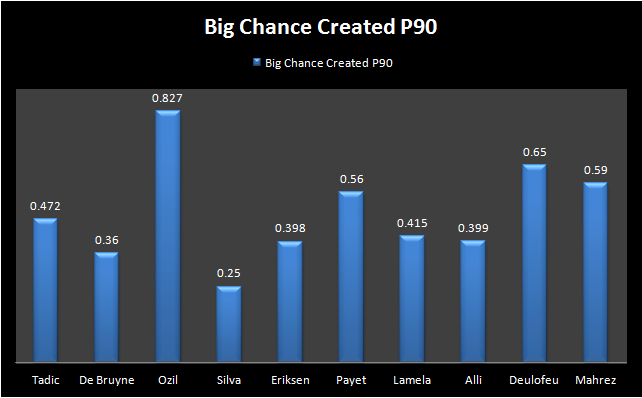 All things being equal this season, Southampton are competing in a group alongside West Ham/Leicester/Stoke/Everton for "Best of the Rest" honors. If things go their way, it's entirely reasonable that they finish as the best of the five. It's also possible that the Europa League, for good or bad, drains them enough that they finish the worst off. The bookies have their over/under is 50.5 points, which is low on the surface considering previous seasons, but if things go wrong it could be where they end up. The football media will likely write them off for their constant retooling, but with consistency across different managers and a system that has so far absorbed change effectively, Southampton perhaps deserve the benefit of the doubt. _________________________________ Check out our other previews here
All things being equal this season, Southampton are competing in a group alongside West Ham/Leicester/Stoke/Everton for "Best of the Rest" honors. If things go their way, it's entirely reasonable that they finish as the best of the five. It's also possible that the Europa League, for good or bad, drains them enough that they finish the worst off. The bookies have their over/under is 50.5 points, which is low on the surface considering previous seasons, but if things go wrong it could be where they end up. The football media will likely write them off for their constant retooling, but with consistency across different managers and a system that has so far absorbed change effectively, Southampton perhaps deserve the benefit of the doubt. _________________________________ Check out our other previews here